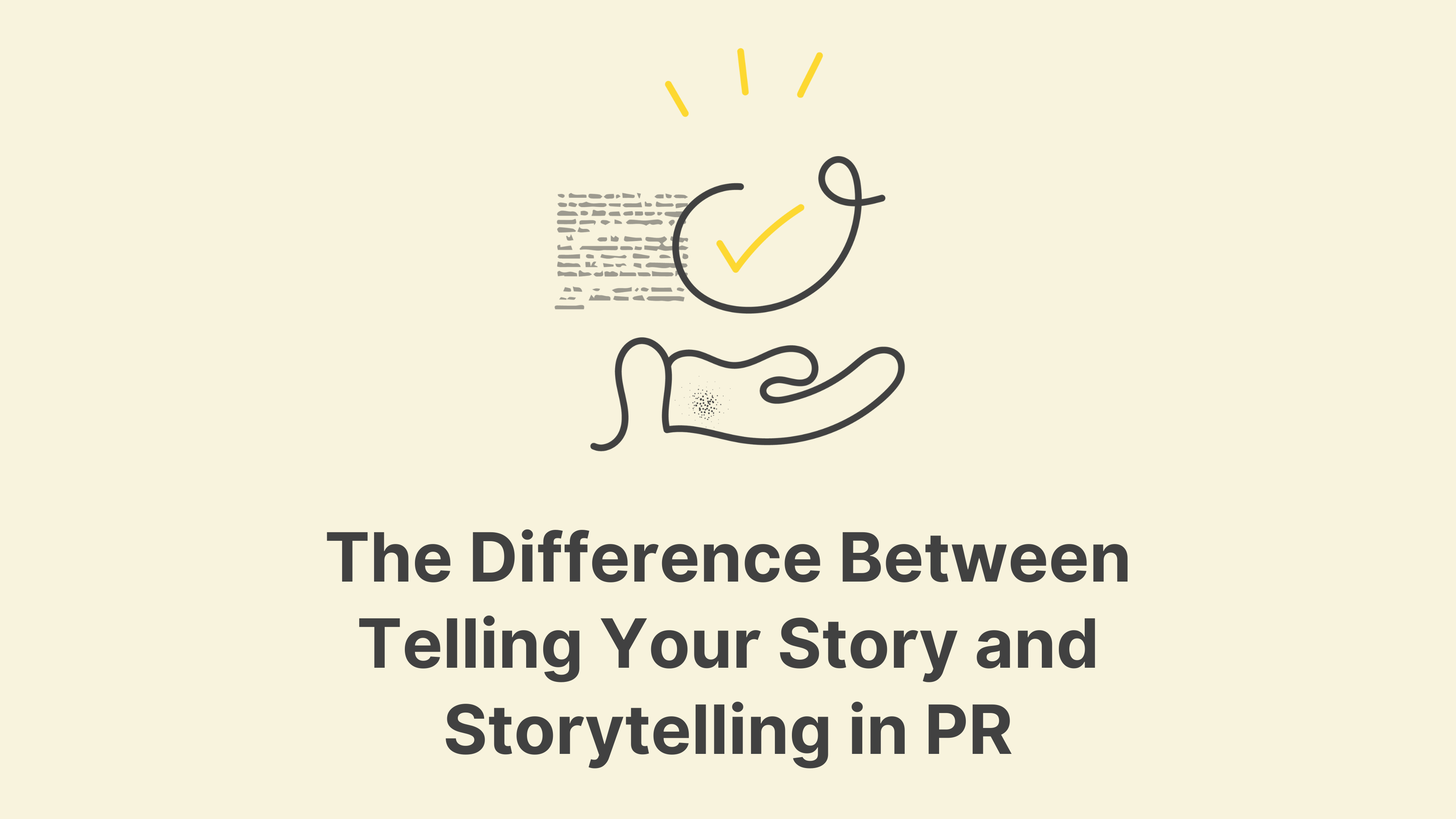Telling Your Story vs. Storytelling: Key Differences in PR

Anyone can tell a story. What we mean by that is, anyone can recount a tale of something that happened to them or someone they know. In PR, this is much the same.
Many PR pros are tasked with “telling their client’s story” and go about this by pitching out an executive’s biography and accomplishment to a reporter with a CTA of “let me know if you want to talk to [NAME] for any upcoming coverage!”.
Anyone can put a pitch together with this information by referencing LinkedIn or an exec’s online company page. However, this doesn’t exactly paint a picture for a reporter or provide tangible value for their audience.
That’s why today, we’re walking you through the difference between telling your, or your client’s, story and effective storytelling so that you can feel equipped (and hopefully find success) in your media outreach.
Breaking Down the Definitions
Telling a story is exactly what it sounds like. Sure, there can certainly be storytelling elements infused, but for all intents and purposes of this blog, we’ll be defining telling a story as straightforwardly presenting information, facts, or events without necessarily weaving them into a narrative arc.
It's about conveying the who, what, when, where, and why without necessarily delving into the more nuances or relating the idea back to a bigger picture.
In other words, simply telling your story might not resonate with your target reporters because it needs more emotional depth and an engaging narrative to grab (and hold) their attention.
Storytelling, on the other hand, involves crafting a narrative that goes beyond mere recitation of facts and incorporates elements like data or research, emotional resonance, and a clear connection to the reporter’s beat.
Storytelling helps your PR efforts spark curiosity and can lead to a deeper connection with not only reporters, but also their readers.
How to Avoid Telling a Story When Infusing Storytelling In Your Pitching and PR
By now, you might be thinking, “okay, avoid telling a story in my pitch by restating facts, got it..but how exactly?” We’ve got you.
Paint a pretty picture. Instead of simply presenting facts and events, structure your pitch in a way that follows a narrative arc. Start with a captivating hook, introduce the “characters” (your client or their product), the challenges they faced, and end with your clear offer or CTA.
This approach engages the journalist and makes the story more memorable for them.
Pull on the heartstrings. Incorporate emotional elements into your pitch to connect on a deeper level.
Share any relevant personal anecdotes, struggles, milestones, or triumphs that evoke empathy or pique interest. By appealing to emotions, you can make your story more relatable and compelling.
Provide context. Ensure that your story is not just a standalone narrative but is also relevant to the reporter's beat and audience, as well as the larger news cycle.
Relate the story to current trends or issues to help the reporter see why your story matters to their audience and how it fits into their broader coverage picture. Showing relevance and offering valuable insights increases the likelihood of your story being well-received and covered.
A Template to Inspire You
Here’s a sample pitch that does a fantastic job playing up the storytelling element. We tell you how below.
Hi [REPORTER],
In a time where it’s now 52% more expensive to buy a home than rent one, millennials are really feeling the heat. The fabled American dream we were once sold, an owned home with a picket fence, now seems more like a storybook topic than an attainable goal. ⬅️ References a timely article and attention-grabbing statistic. Also uses strong pathos terms like “feeling the heat” and “fabled American dream.”
However, millennials need to know that all hope isn’t lost - there’s still a way that we can turn any living situation into an ideal space with a little creativity and flexibility. ⬅️ Pulling in the curiosity gap, immediately the reader wants to know, what’s this new way?!
Enter flexible furniture solutions like furniture rental, which is a great way to bring style and quality into a living space without significantly driving up costs, particularly in a time when dollars seem to stretch less. ⬅️ One quick sentence about the answer to this issue and communicating a benefit, affordability, and tying it back to timeliness with “in a time when dollars seem to stretch less.”
I’d love to share more on this topic by connecting you to [SOURCE NAME, TITLE, ORGANIZATION] (and a fellow millennial), to offer expert insight into how these services can offer millennials access to their dream spaces - any interest in connecting? ⬅️ Upfront presentation of the spokesperson, not reliant on their superfluous credentials. Leverages the millennial credential as it is relevant to the pitch, and positions clearly what the person can speak on.
We hope you come away from this blog feeling inspired to infuse a little more pathos into your pitching. Tug on those heartstrings, appeal to the human emotion, just remember to do so in a way that communicates the value for the journalist and their audience up front.
______
If you want more blogs like this on the tactical side of PR and communications, take a moment to subscribe to our newsletter and never miss a tip!
